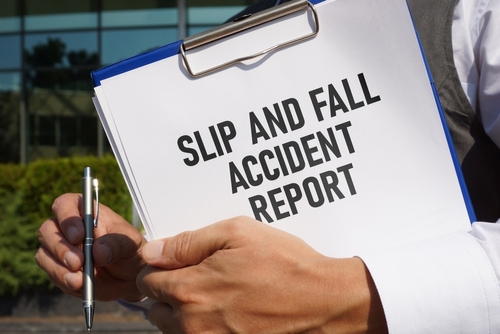When a client has been injured in a slip-and-fall accident at a business, one of the first things a personal injury lawyer will look for is whether there were any building code violations that caused the accident.
If you’ve been injured in a slip and fall accident caused by a property owner’s negligence, don’t hesitate to reach out to find out what legal recourse you may have. At Shapiro, Washburn & Sharp, we can help you assess your claim and guide you through the legal process to ensure you receive the compensation you deserve. Call us today at 833-997-1774 for a free consultation.
What Are Common Code Violations in Slip and Fall Accidents?
Code violations refer to the failure to adhere to established safety standards or building codes meant to prevent accidents and injuries. These codes are set by local governments, the Occupational Safety and Health Administration (OSHA), and other regulatory bodies to ensure public safety in buildings and on properties. When property owners or managers fail to maintain their premises according to these codes, hazardous conditions can arise that may lead to slip and fall accidents. In such cases, the property owner could be held responsible for any injuries sustained due to their negligence in maintaining safe premises. A slip and fall lawyer from our firm can evaluate your case to determine what your legal options are.
What Are Some Common Code Violations That Can Cause Slip and Fall?
Several types of code violations can contribute to slip and fall accidents. Some of the most common include:
Uneven or Broken Flooring
Cracked, uneven, or broken flooring can create tripping hazards. This includes damaged tiles, torn carpets, or uneven concrete surfaces. These conditions can violate building codes that require floors to be safe and even, particularly in public spaces like shopping malls, restaurants, or office buildings.
Improperly Maintained Walkways
If a property owner neglects to clear walkways of hazards such as ice, snow, or debris, it can lead to slip and fall accidents. Building codes often mandate that outdoor walkways, sidewalks, and parking lots be properly maintained to ensure they are free of obstructions and slip hazards.
Lack of Proper Lighting
Poor lighting in hallways, stairways, or parking lots can increase the risk of slip and fall accidents. Code violations related to lighting occur when the lighting level is inadequate, making it difficult for individuals to see potential hazards like steps, obstacles, or wet floors.
Inadequate Handrails on Stairs
Stairs without proper handrails or with broken handrails can contribute to serious falls. Building codes usually require that stairs have handrails that are securely attached and at the correct height to provide support to people using the stairs.
Wet Floors Without Warning Signs
Spills or wet floors can cause slipping, especially in areas where liquid or moisture has accumulated unexpectedly. If a property owner fails to clean up spills promptly or does not place proper warning signs around wet floors, it may violate safety codes meant to prevent slip and fall accidents.
Broken or Missing Stair Treads
Stair treads that are cracked, loose, or missing can lead to tripping hazards. Building codes require that stair treads be properly installed and maintained to prevent accidents. Failure to repair or replace damaged treads could contribute to a slip-and-fall incident.
Unsecured Rugs or Mats
Rugs or mats not properly secured to the floor can easily shift or curl, creating tripping hazards. Code violations occur when rugs or mats are not fastened or placed correctly in high-traffic areas, such as near entrances or hallways.
Improperly Placed Electrical Cords
Electrical cords in walkways or areas where people may trip can lead to accidents. Building codes require that cords be safely secured or routed to avoid creating trip hazards in busy areas like offices, retail stores, or public spaces.
How Can Code Violations Lead to Legal Liability in a Slip and Fall Case?
If a slip and fall accident occurs due to a property owner’s failure to comply with safety codes, a personal injury lawyer may be able to pursue a claim on the victim’s behalf. Property owners are responsible for maintaining a safe environment for visitors, tenants, or customers, and failing to address or fix known code violations can be legally deemed as negligence. An attorney specializing in premises liability cases can use that failure to comply to build an even stronger case against the owner.
What Should I Do If I’ve Been Injured in an Accident?
If you’ve been injured due to a property owner’s negligence, the first step is to seek medical treatment. Once your immediate needs are addressed, contact an attorney specializing in personal injury cases to discuss your options.
At Shapiro, Washburn & Sharp, we have decades of experience handling personal injury claims. We understand how to navigate the legal process and work with you to maximize the value of your case. Call us at 833-997-1774 to schedule a free consultation, and let us help you get the compensation you deserve.
